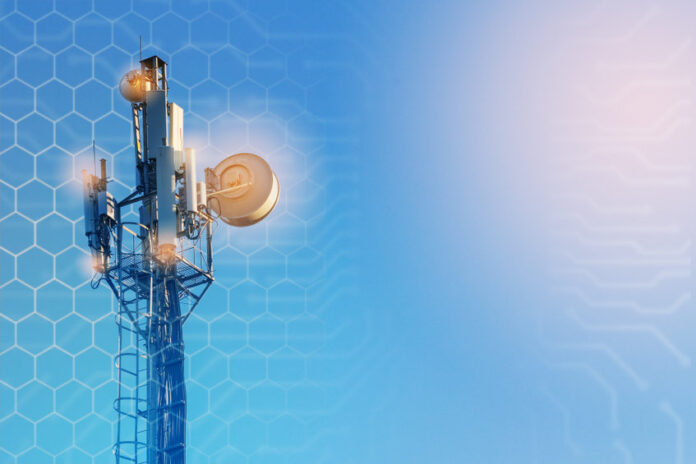What is the reality of 5G’s power needs? RCR Wireless reached out to Ian Campbell, CTO of cable and mobility at Cisco’s Service Provider segment, for his thoughts on the matter. This Q&A was conducted via email and has been lightly edited for length and clarity.
How would you describe the power needs of 5G as compared to 4G, either on a per-site basis or by other metrics?
Today, for most CSPs, a vast majority of LTE sites are deployed in distributed architecture with LTE Radio and basebands deployed at the same site. Depending on the backhaul transport availability, a small percentage of sites have been deployed in a centralized RAN topology, where baseband units are deployed in a central location.
5G architecture introduces split architecture of [gNodeBs] with the flexibility to deploy the gNB-RU/DU [and] gNB-CU at different locations, which allows CSPs to use optimal design for maximum resource efficiency as well as power efficiency, considering the capacity requirements of the network. The virtual RAN architecture of 5G allows them to provision and scale capacity per requirement, in a more power-efficient way than current deployments in LTE, allowing them to scale the gNB-DU and gNB-CU capacity as needed.
While existing LTE radio hardware and sites can support 5G using software upgrades and will continue to support concurrent-mode LTE/5G operation, the 5G deployments are mainly happening in midband (3.5 GHz) and mmWave. For instance, the mmWave deployment, where the F1 interface goes directly from an integrated RU/DU unit to a centralized CU location, eliminates the need of a gNB-DU site and cooling requirements at the site.
Also, unlike legacy LTE radios, 5G midband will be also deployed using massive MIMO that will support up to 16 DL layers and 8 UL layers operation; this brings much more spectral efficiency. From the capacity perspective, thanks to larger midband bandwidth and mMIMO technology, 5G midband will offer more throughput capacity at a lower power than LTE, supporting more data bits per kilowatt of energy.
Where do you think the power needs of 5G will be most obvious: The base station, the device, the data center, edge compute or somewhere else in the overall 5G system?
This is a great question, and the answer may vary as new applications emerge over the timeline and the evolution of the network and compute system. While initial deployments of 5G will offer immediate capacity relief to existing LTE network, 5G is also being deployed to offer Fixed Wireless Access Service for homes and businesses. In FWA, we believe the customer premise equipment/devices, base stations and the core network will be operating to support provisioned capacity. With emergence of new [systems-on-chip] for customized, vendor-proprietary hardware and the use of new processors in virtual RAN and virtual core functions, we will get a power-efficient network to support maximum capacity. Edge compute growth will be subject to use case. A large amount of data will be generated by devices and at the edge, and data generated by devices will trend toward growth. As new applications emerge, the focus will be more on edge than the data center. In the transport and 5G network, device vendors will have a key role to play, and Cisco is geared up to meet the emerging requirements to support this with our transport network, security and 5G offerings.
Can you describe any specific power aspects that you think will evolve in 5G over time between early/current 5G systems versus more mature ones?
We believe power efficiency is a key requirement, and as we have seen with the progress the industry has made until now, we expect the power efficiency and absolute power consumption of mature 5G systems with emerging releases will be better to serve ever increasing data traffic. With major developed countries targeting to minimize their CO2 emission, our industry will also work on enhancing energy efficiency. Networks will rely on intelligent algorithms to ensure maximum power savings and lighting up spectrum, network resources just to address the user demand. Protocol and signaling optimization, deployment architecture, new functionalities for energy efficiency will be envisioned to improve power efficiency. Use of AI/ML will also enable optimal operation of the system, leading to power efficiency.
Some argue that even if 5G isn’t “green” in and of itself, it will enable less power consumption overall through the use of automation and other 5G-based tech. Do you consider 5G a “green” technology?
We have seen how applications on mobile and PCs, supported by both cellular and Wi-Fi radio access, have enabled efficient use of our resources. 5G is indeed a milestone on the path to green technology. While the primary purpose of network such as LTE, 3G, 2G were geared towards providing voice and data connectivity, 5G is here as an enabler for industry 4.0, together with intelligent edge.
With 5G, we are expecting to see the networks able to serve more capacity at lower energy consumption. The network architecture, application and use case supported by 5G will indeed enable efficient utilization of all our resources while providing many benefits.
Looking to learn more about the green credentials of 5G and IoT? Download our new special report, a joint project of RCR Wireless News and Enterprise IoT Insights.

